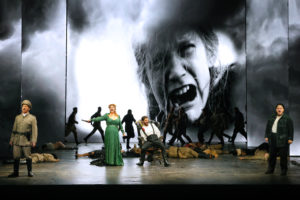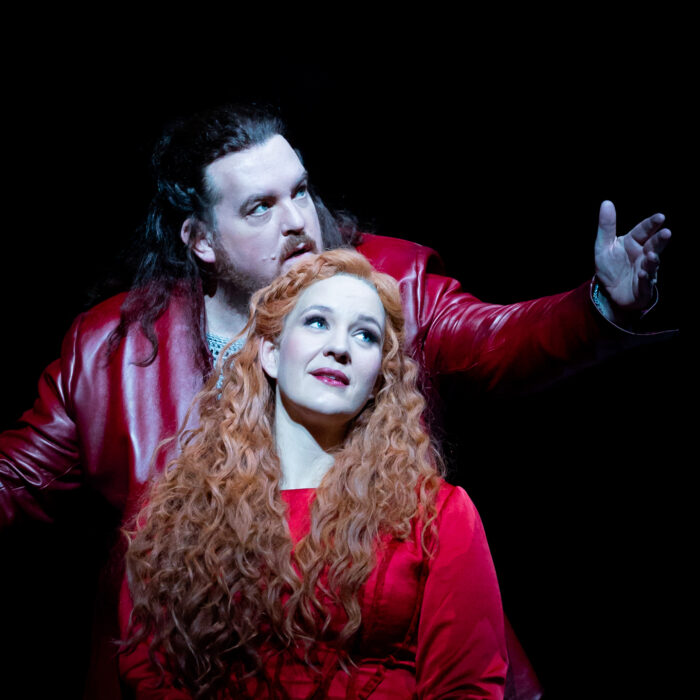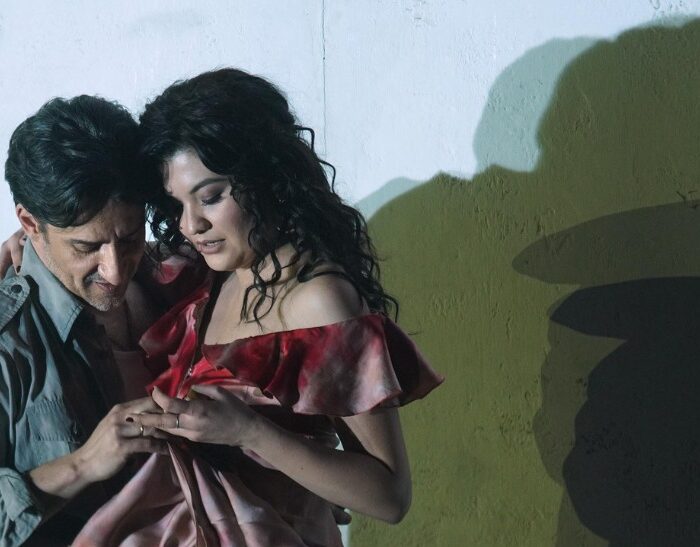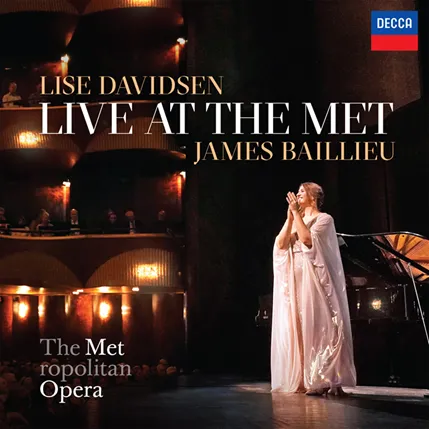
Opera Australia 2022 Review: Attila
David Livemore’s Production Makes Strong Case for Early Verdi Work
By Gordon WilliamsPhoto credit: Prudence Upton
Verdi’s “Attila” of 1846 could be characterized as “cabelettismo,” in reference to the quantity it contains of those brisk, strutting, decisive passages (“cabaletti”) that capped off vocal numbers in early 19th century Italian opera. There could be an implication here that the 32 year-old Verdi relied on this device rather too much, and that this prevalence limited the effectiveness of his drama.
But is that actually so?
I thought about this on October 29th while watching Opera Australia’s latest production at Sydney Opera House, a co-pro with Teatro Alla Scala, of this early Verdi work which has taken two years to get to Australia’s shores (thanks to COVID), and marveling how gripping, actually, this production was.
The ancient story of the Hunnish king Attila’s incomplete conquest of Italy and murder at the hands of the female lead Odabella at the end of the opera inspired a patriotic reaction when first performed in 1846. Some contemporary commentators described this work as “political education for the people.” Davide Livermore’s production, prepared for Sydney by Kate Gaul, conveyed just how galvanizing this work might have been back then. And might still be.
Fascist Italy
Updating the original setting from the mid-5th century to Fascist Italy was an obvious way to guarantee closer-to-our-own-time relevance perhaps, but actually Giò Forma’s sets (ruins in the Prologue) eerily evoked images of bombed-out ruins in Ukraine. This was a production that clearly delineated a somber story and conveyed its continuing gravity.
In the opening scene, Attila’s forces have overrun the Adriatic city Aquilea, and depictions of Attila’s summary executions of civilians had an immediacy that said “Opera can be vital theater today, too.” In the Prologue’s second scene we could be moved by the rebuilding of the refugees’ church and the remaking of a crude cross. It was an apt image of starting over, made poignant by the choral basses’ tender praises to the Lord (“Lode il Signor!”).
Incidentally the only jarring note in the updating to my ears was Act two scene two’s banquet scene. Verdi’s original accompaniment – prominent harp – does not quite justify the level of carousing and corruption the production might have hoped to convey.
Video projections are a familiar feature of recent Opera Australia productions. Refer back to Livermore’s “Aida” presented at Sydney Opera House in 2020, and Graeme Murphy’s “Madam Butterfly” earlier this year. D-Wok’s projections once again added an extra dimension to this production.
In the refugees’ scene (Prologue, scene two), following upon a storm, pervasive black and white images of angry clouds augmented Verdi’s rudimentary early 19th century tone-painting. Perhaps most effectively the graphic depiction of Attila’s execution of the child Odabella’s father helped render sympathetic a character whom Charles Osborne described in his book on Verdi’s operas “the most unpleasant heroine in all Verdian opera.”
Yes, there’s probably a question as to how pervasive these digital projections should be in the opera theater. The answer might be “a lot” in this cinematic age. But are they a new narrative or contrapuntal thread? Maybe a garnishing? Some might consider them a distraction. I had hoped that the images might have provided even more touching backstory at the end when Odabella is on the point of revenge; that we had seen her and her assassinated father in visual references to even earlier fondly-remembered days.
What About the Singers?
But what about the singers, considering how Verdi, in a letter to one of his librettists, Piave, praised the opera’s “three stupendous characters.” Opera Australia’s production boasted a convincing cast.
Baritone Michael Honeyman replaced an indisposed Mario Cassi, as Ezio, Attila’s “honorable adversary. His every scene with Attila was an intense two-hander, particularly when suggesting that he and Attila should divide up the world between them.
As Odabella, Armenian-Australian soprano Natalie Aroyan commanded the stage from the stunning two octave flourish of her entrance on “Santo di patria,” and she succeeded in making her Odabella sympathetic in ‘Oh! nel fuggento nuvolo’ (seeing her late father’s image in the fleeting clouds).
There was engaging complexity in Ukraine-born baritone Taras Berezhansky’s portrayal of the title role of Attila, especially in the swelling anxiety of his Act two scene one recounting to Uldino (Virgilio Marino) of his dream – the disquieting vision of an old man who bars his way to Rome.
Though not one of the “stupendous” characters mentioned by Verdi in his letter to Piave, Foresto is the lead tenor, one of the refugee Aquileans, in love with Odabella. From his entrance in the second scene to the Prologue Mexican-Australian tenor Diego Torre impressed with the clarity and focus of his sound. He provided one of this “educational” opera’s most effective moments of tenderness in his Act three aria “Che non avrebbe il misero,” caressing the word “angeli” (“because you are the equal of angels”) in his recollections of Odabella.
In a supporting role bass Richard Anderson conveyed great authority as Pope Leo, the old man of Attila’s dream, who stands up to the would-be conquerer and stalls Attila’s ambitions when he turns up in the flesh to stop Attila’s progress to Rome.
A shout-out to Paws on Film and their horse-wrangler who kept Pope Leo’s white horse calm during Act one’s rousing and almost overwhelming climax.
Conductor Andrea Battistoni provided a brisk and alluringly-efficient reading of this score. His close attention to exciting and sometimes slightly-giddying tempo shifts generated much excitement. Those cabalettas mentioned above were thrilling in his and the singers’ hands.
Arguably this early Verdi opera does not have the extractable numbers that you can find in a “Nabucco” or “Macbeth,” although Italy’s early audiences latched onto the implied patriotic appeal of Ezio’s “È gettata la mie sorte” (My lot is cast; I am prepared for warfare). But Livermore, Gaul and Battistoni proved that “Attila” deserves appreciation as an impressive piece of theater. Baritone Berezhansky’s unfurling of a Ukraine flag during the curtain call inspired a justified increase in the volume of opening night applause.



